Our news
Why is Châteauneuf-du-Pape so expensive?
Châteauneuf-du-Pape is a prestigious wine whose price is justified by several factors.
- An exceptional terroir: The appellation is based on soils rich in rolled pebbles, which provide excellent thermal regulation and enable optimal ripening of the grapes.
- Strict specifications: Regulations impose low yields (around 35 hl/ha), guaranteeing aromatic concentration and high wine quality.
- Ancestral know-how: Vinification and ageing require time and expertise, which increases production costs.
- Prolonged aging: Many Châteauneuf-du-Pape wines require long aging in barrels or vats, followed by bottle ageing before release.
- Strong international demand: Its worldwide reputation and exceptional ageing potential are driving up prices, especially for the best vintages and renowned estates.
All these elements explain why Châteauneuf-du-Pape is considered an exceptional wine, justifying its higher price than other Rhône Valley appellations.
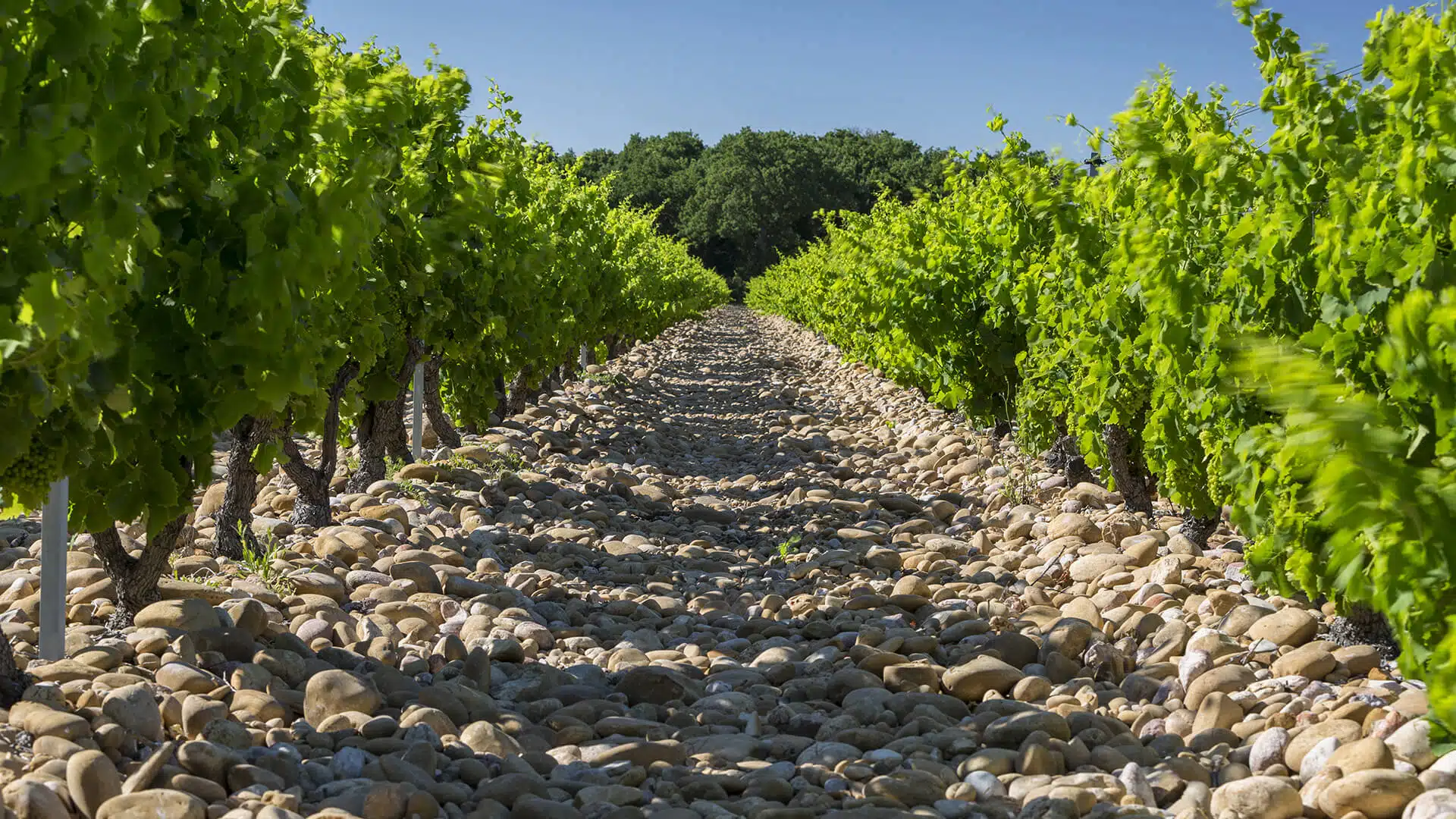
How many wineries are there in Châteauneuf-du-Pape?
The Châteauneuf-du-Pape appellation counts some 320 producers, including around 180 wineries. These estates are spread over 3,200 hectares of vines, producing an average of 100,000 hectolitres of wine a year, or around 13 million bottles.
The Châteauneuf-du-Pape vineyards stretch over five communes: Châteauneuf-du-Pape, Bédarrides, Courthézon, Orange and Sorgues. This geographical diversity, combined with a wide variety of terroirs and grape varieties, contributes to the richness and complexity of the appellation’s wines.
The estates vary in size and production, some being small, family-run producers while others are large, world-renowned estates. Each winemaker brings his or her own touch, reflecting the unique character of the Châteauneuf-du-Pape terroir.
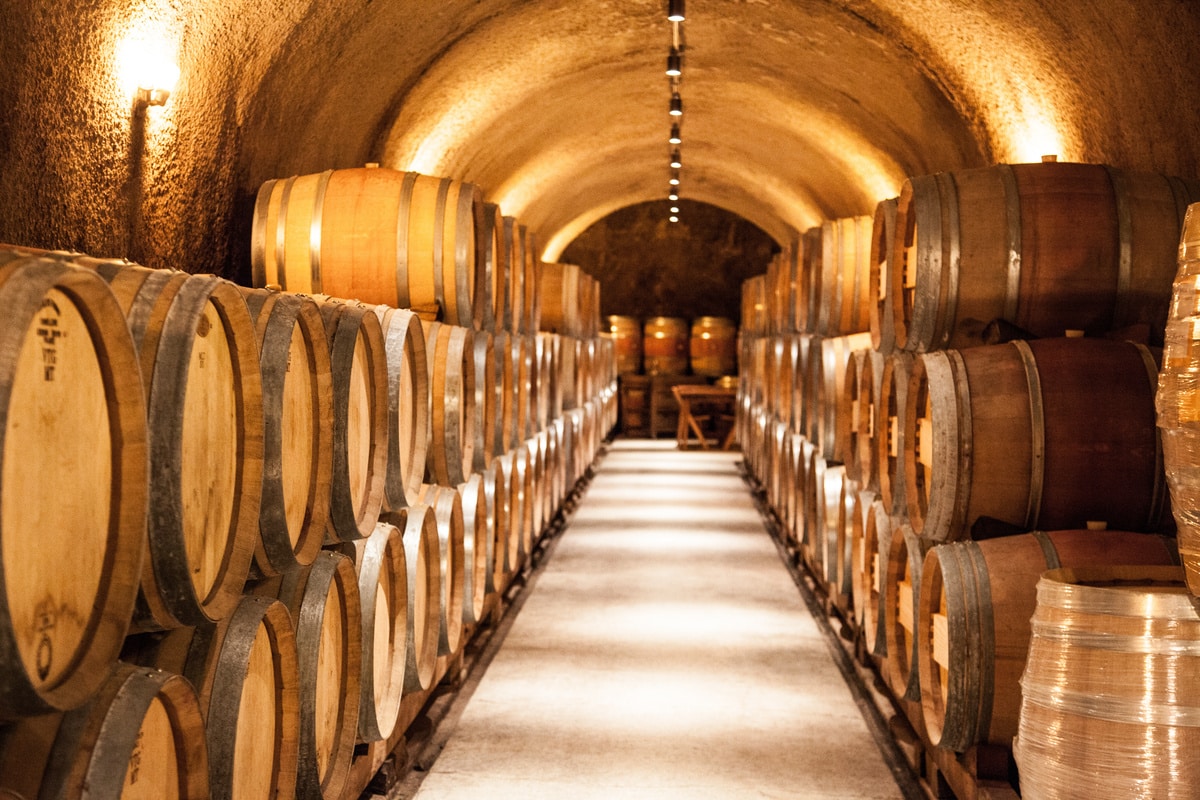
What are the best years for Châteauneuf-du-Pape?
The wines of Châteauneuf-du-Pape are strongly influenced by the climatic conditions of each vintage. Some years offer ideal conditions for grape ripening, giving rise to exceptional, powerful and well-balanced wines.
1. Exceptional vintages (long ageing, great complexity)
These years are considered perfect for ageing, with wines of great concentration and excellent balance:
✅ 2016 – An exceptional vintage, combining power, freshness and balance.
✅ 2010 – Great tannic structure and excellent ageing potential.
✅ 2005 – Concentration and elegance, perfect for ageing.
✅ 1998 – Superb vintage, very structured with aromas of truffles and spices after aging.
2. Very great vintages (excellent, but slightly more affordable)
These years have produced very well-balanced wines , accessible young but capable of ageing well:
✅ 2019 – Superb balance between fruit, acidity and tannic structure.
✅ 2015 – A sunny year, offering rich, expressive and harmonious wines.
✅ 2009 – Powerful, round and generous, very pleasant to drink now.
✅ 2001 – Beautiful freshness and great elegance, with excellent ageing potential.
3. Good vintages (more accessible, to be enjoyed earlier)
These vintages are very enjoyable young, although they can also be kept for a few years:
✅ 2020 – Fruity, accessible and well-balanced.
✅ 2017 – Round and supple, pleasant now.
✅ 2012 – Fine and elegant, for drinking or cellaring for a few more years.
4. More difficult vintages
Some years were marked by more complex climatic conditions, but the good winemakers were able to produce fine wines:
⚠️ 2013, 2008, 2002 – Cooler years with lighter, less concentrated wines.
How to choose the right vintage?
The choice of vintage depends on the tasting objective:
🍷 Drink now? Choose more supple vintages such as 2017, 2019 or 2020.
🏆 To keep in the cellar? Opt for years like 2010, 2016 or 2005.
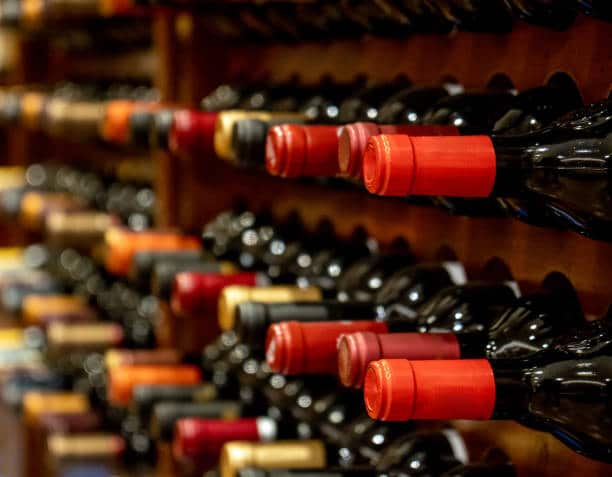
What is the ageing potential of Châteauneuf-du-Pape wines?
Châteauneuf-du-Pape wines are renowned for their great ageing potential, thanks to their concentration, tannic structure and aromatic richness. However, aging potential varies according to wine color, vintage and winemaking style.
1. Ageing of Châteauneuf-du-Pape reds 🍷
✅ 5 to 15 years for young, fruity, Grenache-dominant wines.
✅ 15 to 30 years (or even more) for wines from great vintages and cuvées with a high proportion of Mourvèdre and Syrah, which bring structure and longevity.
🔹 Over time, aromas evolve towards notes of undergrowth, truffles, leather and spices, while retaining great depth.
2. Ageing Châteauneuf-du-Pape whites 🍾
✅ 3 to 7 years for fresh, fruity whites, often based on Grenache Blanc and Clairette.
✅ 10 to 20 years for more structured, complex cuvées, especially those with a high proportion of Roussanne, which brings a beautiful aromatic evolution with notes of honey and dried fruit.
🔹 Unlike reds, some white Châteauneuf-du-Pape wines gain richness and roundness with age, developing aromas of hazelnut, beeswax and sweet spices.
Factors influencing custody
🔸 Vintage: Great years (e.g. 2010, 2016, 2019) offer longer ageing potential.
🔸 Aging: Wines aged in barrels or large casks age better thanks to controlled oxygenation.
🔸 Storage conditions: A cellar at a stable temperature (12-14°C), protected from light and vibrations, favors optimal evolution.
Thanks to their complexity and structure, Châteauneuf-du-Pape wines can offer fascinating tasting experiences at different stages of their evolution.
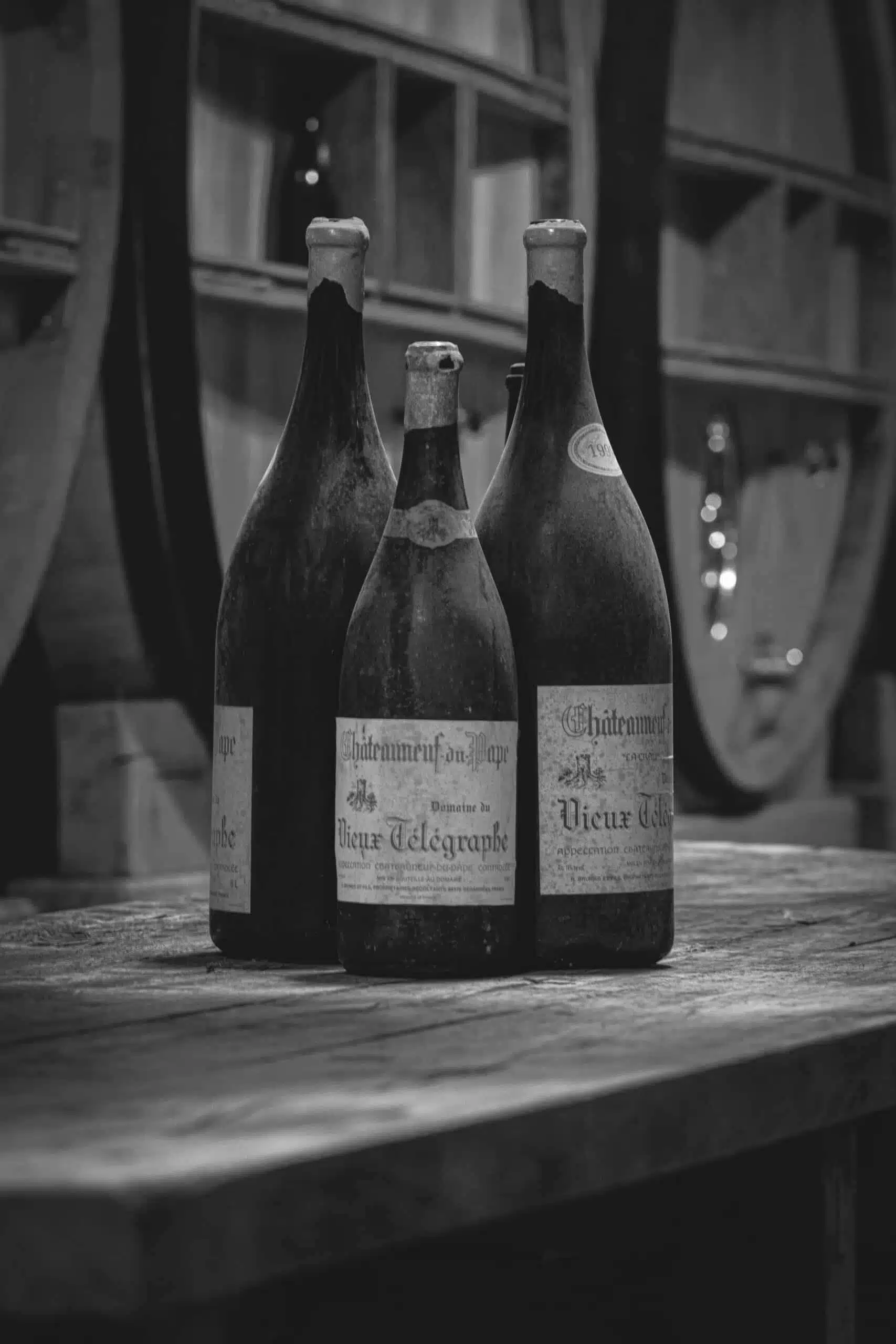
Which dishes go best with Châteauneuf-du-Pape wines?
Châteauneuf-du-Pape wines, whether red or white, have a rich aroma and powerful structure that make them ideal for a wide range of dishes. Here are some perfect food & wine pairings to take full advantage of their flavors.
1. Goes well with Châteauneuf-du-Pape reds 🍷
The reds are rich, generous and often marked by notes of black fruit, spices, garrigue and leather. They are ideal with :
✅ Grilled or roasted red meats: Rib of beef, duck breast, leg of lamb with herbs.
✅ Game: Wild boar, roe deer or hare in grand veneur sauce.
✅ Simmered dishes: Beef bourguignon, daube provençale, lamb tajine with spices.
✅ Mediterranean cuisine: Ratatouille, lasagne, pan-fried vegetables with thyme and rosemary.
✅ Mature cheeses: Comté vieux, Tomme de Savoie, Parmesan.
2. Goes well with Châteauneuf-du-Pape whites 🍾
The rarer whites are elegant, with notes of white flowers, citrus and white-fleshed fruit. They go perfectly with :
✅ Seafood and shellfish: pan-fried scallops, grilled lobster, oysters.
✅ Noble fish: Roasted sea bass, turbot in beurre blanc sauce, salmon en papillote.
✅ White meats: Free-range chicken with cream sauce, veal with morel mushrooms.
✅ Truffled dishes: Risotto with truffles, truffled egg brouillade.
✅ Fresh or creamy cheeses: Chèvre frais, Brillat-Savarin, Brie de Meaux.
Thanks to their complexity and depth, Châteauneuf-du-Pape wines are a perfect match for richly flavored dishes. For optimal tasting, choose a serving temperature suited to each color.
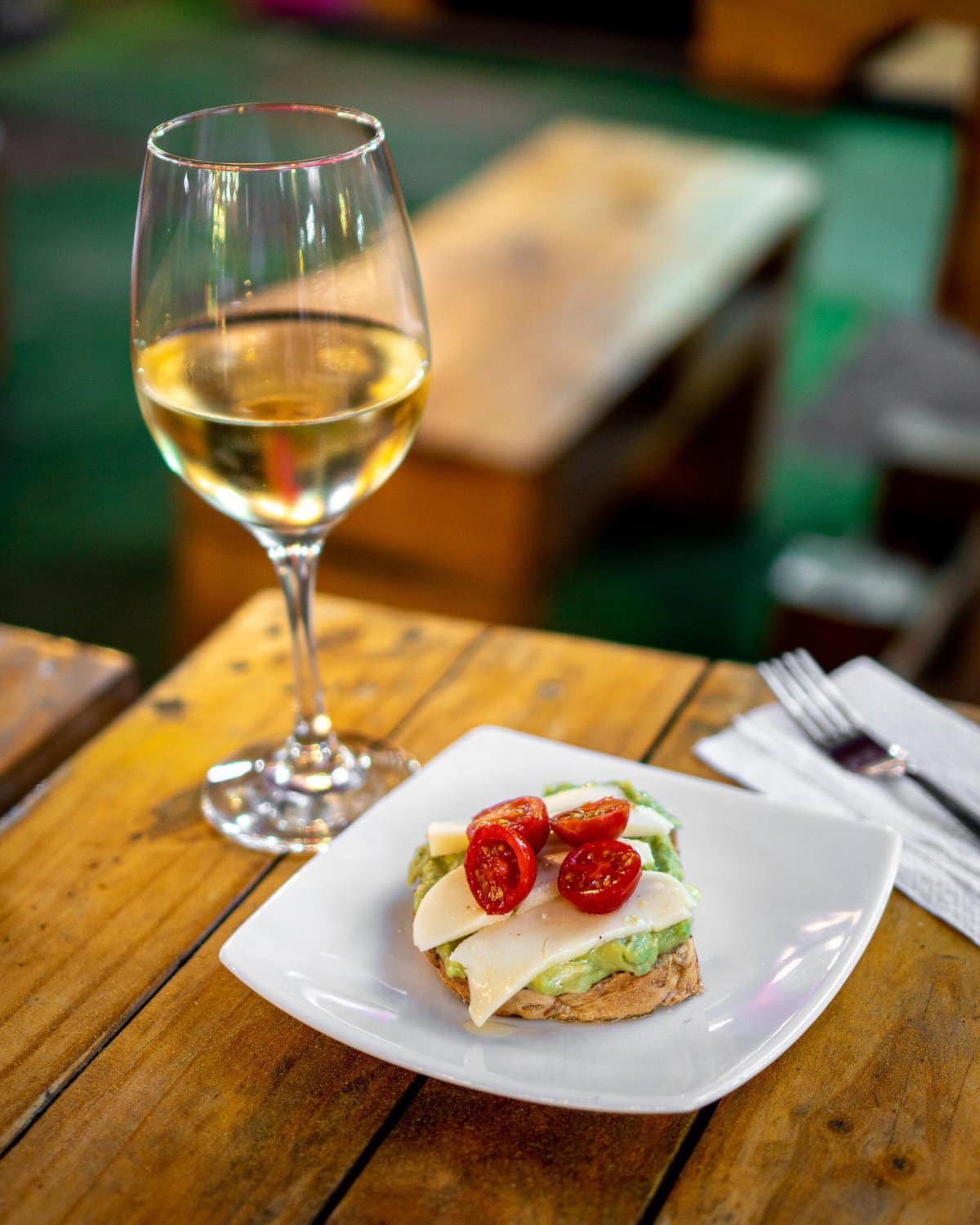
What terroirs characterize Châteauneuf-du-Pape?
The Châteauneuf-du-Pape appellation benefits from an exceptional terroir, marked by a great diversity of soils and climates that directly influence the style and complexity of the wines. There are four main types of terroir that give the wines their unique identity.
1. Rolled pebbles 🏔️
This is Châteauneuf-du-Pape’s most emblematic terroir. These large pebbles come from the ancient alluvial plain of the Rhône and rest on a subsoil of red clay. They store up the sun’s heat during the day and release it at night, ensuring optimal ripening of the grapes. This soil is particularly favorable to Grenache, producing powerful, concentrated, full-bodied wines.
2. Sandy soils 🌱
Found mainly in the eastern part of the appellation, these fine sandy soils produce more elegant, fine and airy wines. They retain less heat and produce wines with softer tannins and delicate floral aromas. Grenache and Syrah express great finesse.
3. Clay-limestone soils 🏡
These soils mixclay and limestone, providing good water retention and natural drainage. They produce well-balanced wines, combining richness and freshness, with a fine tannic structure. This terroir is ideal for grape varieties such as Mourvèdre and Roussanne, which like these cooler soils.
4. Gravelly and calcareous soils ⛰️
These terroirs are located on the upper slopes of the appellation and offer perfect drainage. They produce more nervous, structured wines, often with good ageing potential. Syrah and Mourvèdre develop spicy aromas and a beautiful minerality.
Thanks to this diversity of terroirs, Châteauneuf-du-Pape wines can be powerful and opulent on pebbly soils, fine and elegant on sandy soils, or rich and complex on clay-limestone soils. It’s this variety that makes the appellation so rich and famous.
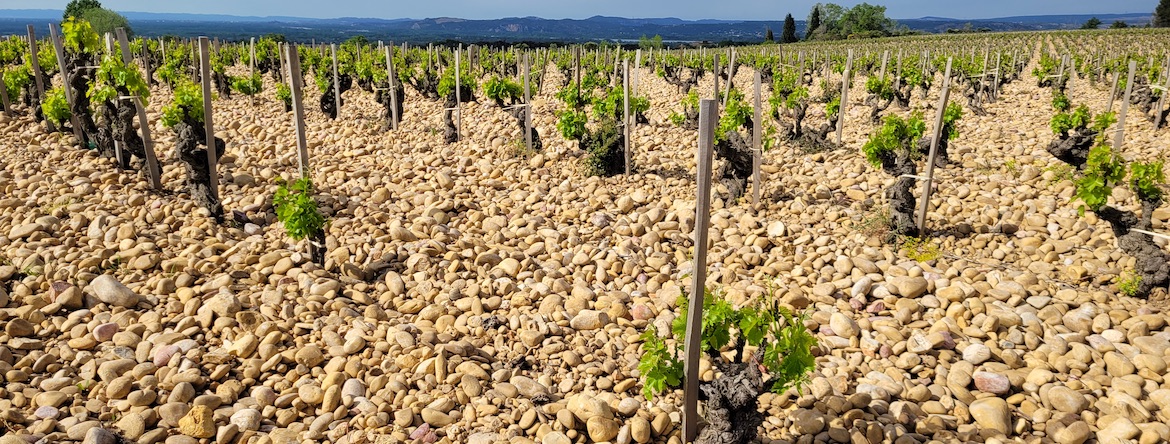
What 13 grape varieties are authorized in the Châteauneuf-du-Pape appellation?
The Châteauneuf-du-Pape appellation is unique thanks to the diversity of its 13 authorized grape varieties, which can be used in blends in both red and white wines. This variety lends great aromatic richness and unique complexity to the appellation’s wines.
Here is the list of the 13 official grape varieties:
Red grape varieties (the majority in production) :
- Grenache Noir – Round, powerful and fruity.
- Syrah – Provides structure, color and spicy aromas.
- Mourvèdre – Adds depth, complexity and ageing potential.
- Cinsault – Brings finesse, lightness and floral notes.
- Counoise – Adds freshness and fruity aromas.
- Muscardin – Adds a floral touch and finesse.
- Terret Noir – Adds lightness and elegance to the wine.
White grape varieties (representing a small proportion of production) :
- Grenache Blanc – Adds richness and roundness.
- Clairette – Brings freshness and floral notes.
- Bourboulenc – Brings liveliness and balance.
- Roussanne – Provides structure and aromatic complexity.
- Picpoul – Adds acidity and tension.
- Picardan – Brings finesse and delicate aromas.
Although all these grape varieties are authorized, Grenache Noir remains the most dominant in red blends, while white wines mainly use Grenache Blanc, Roussanne and Clairette.
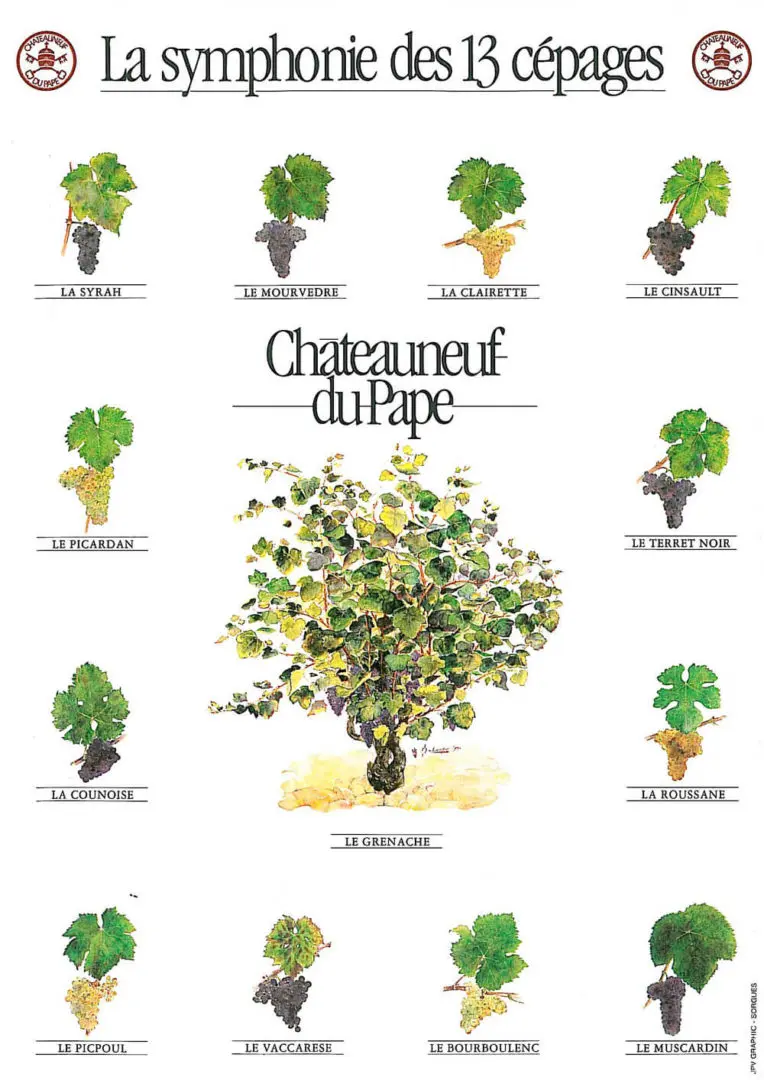
Where does the name Châteauneuf-du-Pape come from?
The name Châteauneuf-du-Pape dates back to the 14th century, when the popes settled in Avignon. Pope Clement V, a great lover of wine, encouraged the development of local vineyards. His successor, John XXII, had a summer residence built in the village then known as Châteauneuf-Calcernier, which later took the name Châteauneuf-du-Pape (“the pope’s new castle”). This historic link with the papacy has greatly contributed to the renown of the appellation’s wines, now recognized the world over for its exceptional crus.

Why the Châteauneuf-du-Pape appellation?
Châteauneuf-du-Pape is distinguished by its exceptional terroir, its unique blend of 13 authorized grape varieties and its rich history linked to the popes of Avignon in the 14th century. Its pebbly soil stores heat during the day and releases it at night, ensuring optimal ripening of the grapes. The appellation is also known for its strict production rules, guaranteeing wines of the highest quality. Thanks to its Mediterranean climate, its wines offer great concentration, aromatic complexity and excellent ageing potential. These characteristics make it one of the most prestigious appellations in the Rhône Valley.

What makes Châteauneuf-du-Pape so special?
What makes Châteauneuf-du-Pape truly unique
What makes Châteauneuf-du-Pape truly unique is its singular terroir, the richness of its grape varieties, and its remarkable history. Nestled in the heart of the Rhône Valley, the appellation enjoys a hot, dry, and sunny Mediterranean climate. The vineyards rest on soils covered with rolled pebbles, which absorb heat during the day and release it at night, ensuring optimal grape ripening.
Thirteen grape varieties are allowed here, both red and white. This diversity gives rise to an incredible range of styles, from intense, structured reds to floral, saline whites. Châteauneuf-du-Pape is anything but one-dimensional—each estate brings its own signature.
The region’s winemaking history dates back to the 14th century, when the Popes in Avignon promoted viticulture. This papal legacy shaped the identity of the appellation, which remains a benchmark of excellence to this day.
Châteauneuf-du-Pape wines stand out for their power, aromatic complexity, and impressive ageing potential. Their quality is rooted in meticulous vineyard practices and precise winemaking—deeply traditional, yet always evolving.